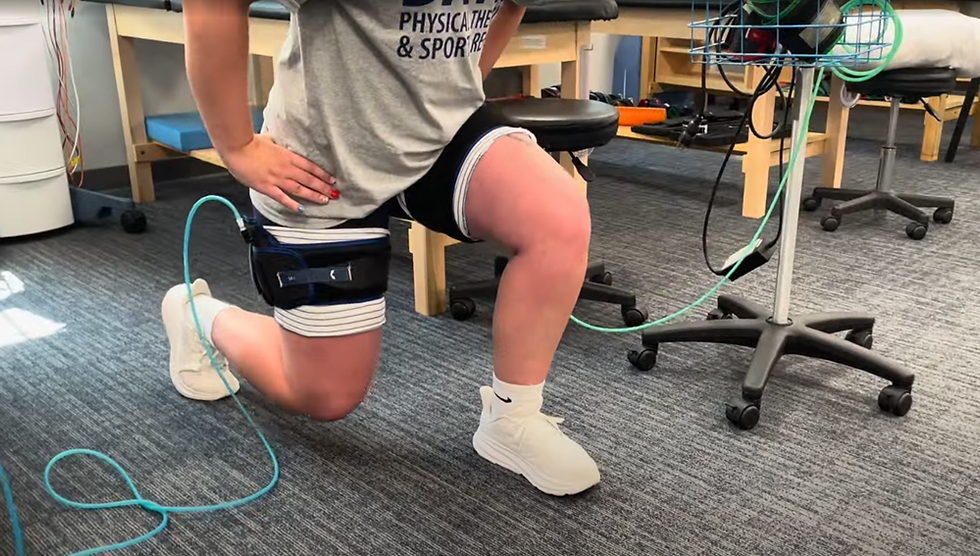5 Overuse Injury Symptoms Athletes Must Not Ignore
- JDS1 Marketing
- Aug 19
- 4 min read

Injuries don’t always happen in a single dramatic moment. Many creep up slowly, quietly building over weeks or months until suddenly you’re sidelined. These are overuse injury symptoms, the subtle warning signs that your body is working too hard without enough recovery.
The good news? You can spot these early, make adjustments, and prevent small problems from turning into big setbacks. For athletes, staying injury-free isn’t just about avoiding pain, it’s about keeping your training consistent, your performance steady, and your goals on track.
Why Overuse Injuries Happen

Overuse injuries occur when repetitive stress is placed on muscles, joints, and connective tissue without enough time to recover. This repeated strain leads to small amounts of damage that, without proper rest or correction, build into something more serious.
These injuries aren’t limited to one sport. They happen in runners logging extra miles, tennis players perfecting their serve, weightlifters pushing for new PRs, and even office workers spending hours at a desk.
When you understand the sports injury warning signs your body sends, you can take action before training comes to a halt.
1. Persistent, Low-Grade Pain in the Same Area

One of the most common overuse injury symptoms is pain that doesn’t go away with rest. This isn’t the normal soreness you feel after a tough workout. Instead, it’s localized discomfort in the same area every time you train.
It might feel dull at first, then sharper during activity, and it often fades afterward, until the next session.
This is your body’s way of saying something’s wrong. If ignored, it can develop into repetitive strain injuries like tendinitis or stress fractures.
What to do:
Rest the affected area and modify training.
Use ice and anti-inflammatory strategies if needed.
Seek injury screening to pinpoint what’s causing the repeated stress.
2. Swelling or Tenderness That Doesn’t Improve

Mild swelling after intense exercise is normal, but swelling that sticks around is another red flag. You may also notice the area feels tender to the touch or warm compared to the surrounding tissue.
These are signs your body is working overtime to repair damage, and that you’re not giving it enough recovery time.
What to do:
Use compression, elevation, and rest to control swelling.
Adjust training load to reduce stress on the area.
Monitor for changes; if swelling worsens, it’s time for a professional assessment.
3. Reduced Range of Motion

When your body protects an injured area, it can limit movement without you realizing it. This might mean you can’t straighten your knee fully, lift your arm overhead without discomfort, or rotate your torso as easily.
Over time, these limitations can affect performance and increase athlete injury risk by forcing other parts of your body to compensate.
What to do:
Add mobility work to your warm-up and recovery routines.
Identify whether stiffness is from muscle tightness or joint restriction.
Consider a movement assessment to catch inefficiencies early.
This can include athletic performance testing to reveal hidden imbalances.
4. Decreased Performance Despite Consistent Training

If you’ve been training regularly but your performance is dipping, it’s worth asking why. Overuse injuries can sap strength, speed, or endurance without causing sharp pain.
Maybe your lifts are plateauing, your sprint times are slower, or your endurance fades faster than usual. This subtle decline can be your body signaling that it’s spending more energy on repair than performance.
What to do:
Track training metrics closely to spot trends.
Dial back intensity or volume temporarily.
Use recovery-focused sessions to let your body catch up.
5. Changes in Movement Patterns

When you favor one side of your body or shift technique to avoid discomfort, you’re creating imbalances that increase injury risk.
You might land differently when running, adjust your swing mechanics, or change your lifting form. These compensations can lead to more serious repetitive strain injuries if left unchecked.
What to do:
Film your training sessions to spot subtle changes.
Focus on symmetry and balance in your movements.
Schedule an injury screening to uncover root causes.
Why Catching Overuse Injury Symptoms Early Matters

Ignoring these early sports injury warning signs can turn a manageable issue into months of missed training. Overuse injuries rarely heal well if you push through the pain.
By spotting symptoms early, you can:
Avoid long-term damage.
Keep training consistent.
Maintain peak performance.
Reduce the likelihood of secondary injuries caused by compensations.
Early detection isn’t just injury prevention, it’s performance protection.
From Warning Signs to Action Steps
Once you recognize these symptoms, the goal is to understand why they’re happening. Sometimes the cause is too much load, poor technique, lack of recovery, or a mix of all three.
A professional assessment can uncover movement inefficiencies, asymmetries, or training errors contributing to your athlete injury risk. With that knowledge, you can adjust and return to training stronger. To ensure you’re on the right path, learn how to track sports injury recovery with measurable benchmarks.
Clearing the Path to Pain-Free Performance
You’ve worked hard to get where you are. The last thing you want is to be forced onto the sidelines by an avoidable injury.
The best way to protect your body is to listen to it, and take action when it speaks up.
Take the Next Step with a Precision Assessment

A DorsaVi™: Athletic Movement Index assessment is designed to do exactly that. Using advanced wearable sensors, it measures how you move in real time across multiple planes.
This level of detail reveals:
Imbalances and inefficiencies that increase injury risk.
Movement patterns contributing to overuse injury symptoms.
Targeted adjustments to improve performance and prevent setbacks.
At Analytics for Athletes, we use this data to create a clear plan for reducing athlete injury risk and keeping you in the game.
Book your Athletic Movement Index assessment today and make your next season your strongest and healthiest yet.






